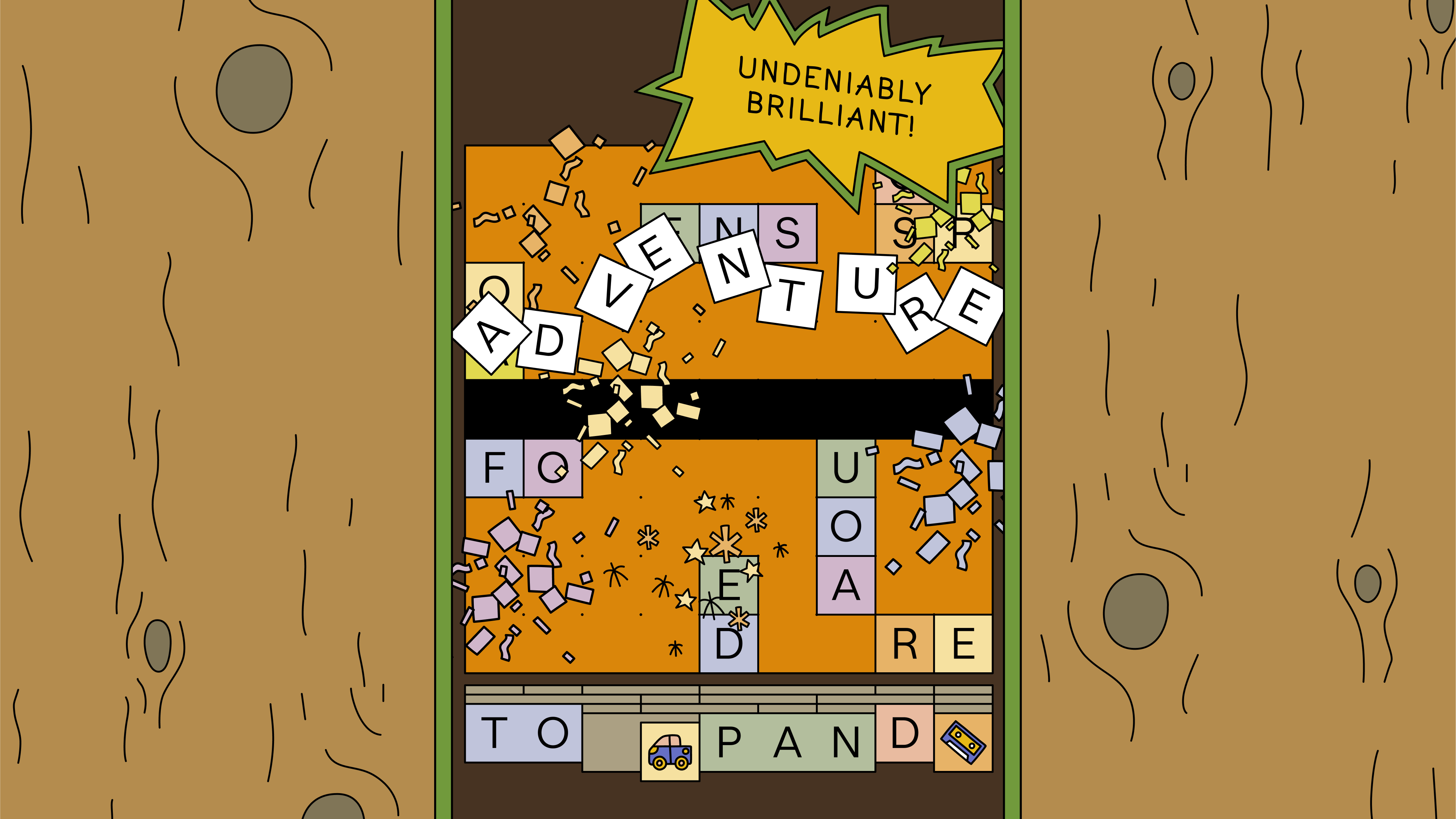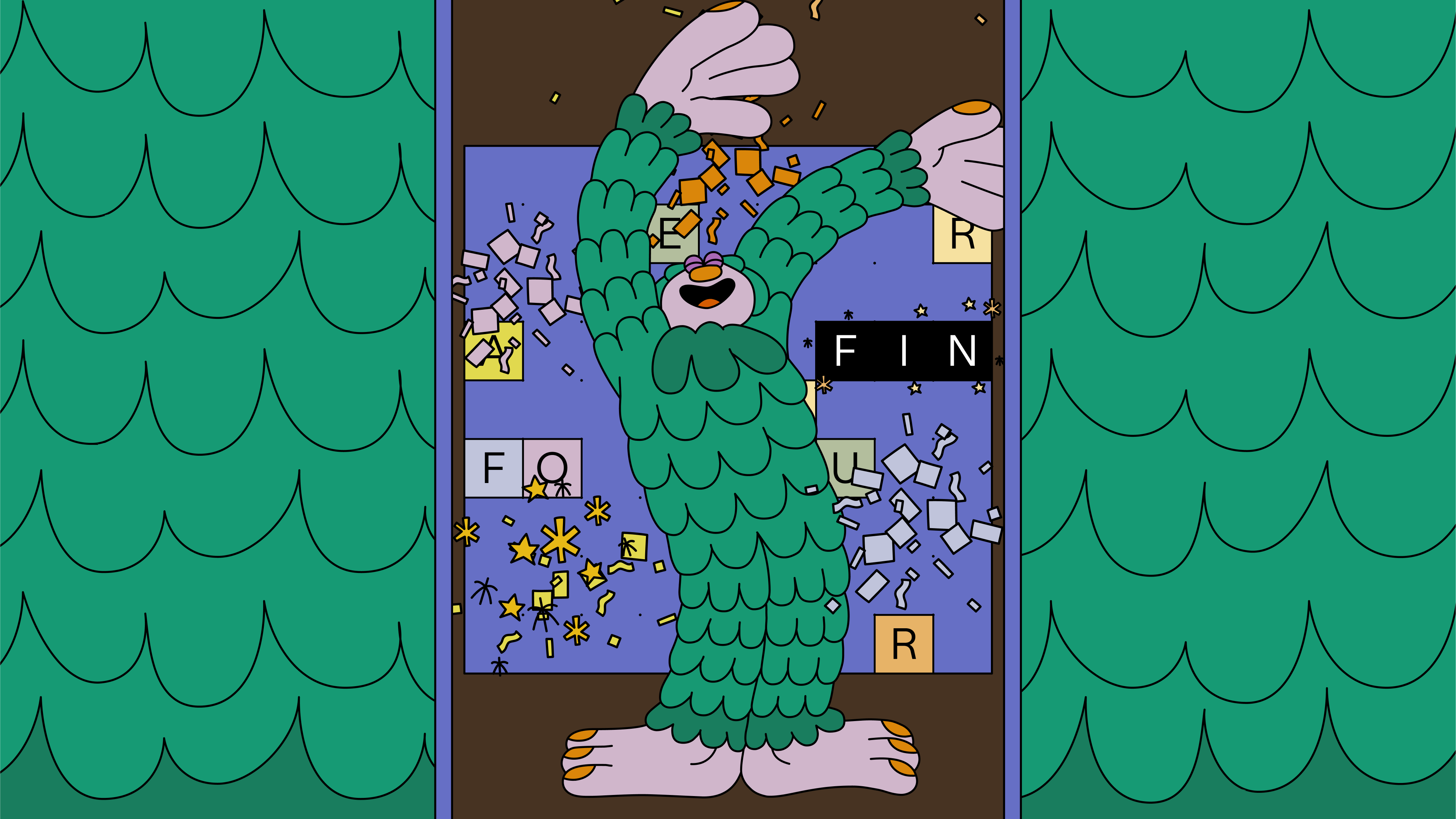 Is that the full title then? Gubbins – It’s A Word Game (Free)? I’m just going to call it Gubbins from here on out. If I need to talk about normal gubbins, I’ll write it without the capital letter G like I just did there. But I don’t have an old brown sofa, so the odds of me needing to talk about gubbins in the course of any given review are fairly low. The odds of me needing to talk about the Gubbins in Gubbins, at least for this review, are rather high. Sorry, I’ve reviewed a lot of word games on iOS in my time, and these intro paragraphs don’t get any easier the fiftieth time. Should we move to the actual meat of the review?
Is that the full title then? Gubbins – It’s A Word Game (Free)? I’m just going to call it Gubbins from here on out. If I need to talk about normal gubbins, I’ll write it without the capital letter G like I just did there. But I don’t have an old brown sofa, so the odds of me needing to talk about gubbins in the course of any given review are fairly low. The odds of me needing to talk about the Gubbins in Gubbins, at least for this review, are rather high. Sorry, I’ve reviewed a lot of word games on iOS in my time, and these intro paragraphs don’t get any easier the fiftieth time. Should we move to the actual meat of the review?
Anyway, Gubbins. It’s a word game, that’s no lie. Letters are distributed to you in some manner or another, and you need to flex your vocabulary skills to try to make big, fancy words in exchange for big, fancy points. This was one of the more obvious kinds of games to put on mobile phones, so it’s not surprising word games came in early and strong. There are absolutely tons of these available, and a lot of them are very good. So how can a new entry stand out from the pack? The answer, I think, comes down to two things. You have to have a twist or gimmick that actually works, and you have to bring your A-game to the presentation. Anything less and people are just going to keep playing Spell Tower or what have you.

I’m going to do the less obvious thing and touch on the gameplay features first. You’ve got three modes to play, though if you opt to go free-to-play you can only choose one to play per day. The mechanics are similar between the three, with only a few different points. Classic mode is the normal game, and I’ll explain what that means soon. Pencil mode removes all but one of the Gubbins from the game, turning it a relatively pure word game. Daily mode gives you the same set-up as every other player on that day, with particular words laid out and certain rules in effect. There’s a reasonably-priced IAP if you want to unlock everything, by the way. I recommend doing it if you like the game. Studio Folly seem like decent folks, and the game is good.
Okay, you’ve selected your desired mode. You’ll now have a board in front of you with a little tray of letters, and you’d be forgiven for thinking there’s something awfully familiar about all of this. But some of the letters are stuck together with other letters, and there are letter tiles behind the letters. It’s like some sort of bizarre solitaire game! If you want to see what’s on those tiles, you’ll have to play the ones on top first. That’s just how it is. You can place them anywhere on the board, and you don’t have to worry about them crashing into other letters or anything. You can rotate them between vertical and horizontal alignments, which is nice.

Once you’ve made something resembling a proper word on the board, you just run your finger along to submit it. The tiles will will be cleared, you’ll get your points, and everyone goes home happy. Keep on playing those tiles until you reach the one at the bottom that says FIN, and when you’re satisfied that you’ve done all you can, play that tile to finish the game. It’s like every game is a fancy little French film. Classy as heck. Your score will be displayed along with all the nifty words you made, and you might even unlock some achievements. If you’re the sort that shares your score, this is where you can do it.
The tile stack is an important feature of this game. It’s not unusual for a game like this to keep which letters are coming next a surprise, but you can clearly see which tiles are blocking the next batch and are nudged towards using letters you might otherwise leave behind. It’s a good set-up that gets players to use new strategies. But it lacks that sizzle, doesn’t it? We’ve got tile stacks! No one is throwing down their wallets for that one. We need some extra gubbins in here. We need some… Gubbins.

In Gubbins, Gubbins are special tiles that will show up randomly as you’re playing through your stack. Some of them will help you, and some of them will hurt you. At first there will only be a few kinds of Gubbins, but as you play you’ll unlock more of them. One of the IAPs also adds more Gubbins to the game. Each Gubbin has its own specific effect, and you’ll generally be given a choice between two of them when they first appear in a game. Some will let you move letters around. Some will move letters around on their own. Some will add useful tiles to the board. Others will add largely unwanted junk tiles.
Bad Gubbins will play themselves once revealed, while it’s up to you to play the good Gubbins whenever you think it’s best to do so. It’s an interesting random element that gives the game a lot of its mechanical flavor, and it’s why I tend to prefer Classic mode to Pencil mode. You might feel differently of course, so it’s good we have the choice. The thing about the Gubbins though is that they also give the game a lot of its aesthetic flavor, and that’s how we move into talking about the presentation. That’s the kind of smooth transition you get from a twenty-five year veteran of the trade.
The presentation in Gubbins is really good. The music is chill, with some soft piano and trumpets making you feel like you’re relaxing in a cafe or something. And who knows? Maybe you are. Sound effects are serviceable and do what they need to. The look of the game is what really puts it over the top. It’s very cartoony, with lots of pop-up effects that punctuate the in-game action. The Gubbins themselves are all individually-designed creatures with their own little animations. When you play them, you’ll see short little flourishes, and some of them will just be hanging out on the edges of the board. The whole game feels alive with all these cute little animated elements, and I dig the creature design. That weird-looking fellow coming out at the end of each game has some impact, to be sure.
It’s hard to find much to object to in Gubbins, really. It doesn’t do anything dramatically different from other word games on a fundamental level, so if you don’t like that kind of thing I guess you won’t enjoy this? Otherwise, this is smooth sailing all the way. It has tons of charm thanks to its lively presentation, the extra twists give the gameplay a flavor of its own, and you can try it out for free, buy extra bits like more Gubbins a la carte, or pay one reasonable fee to get everything. I’ll happily take this game and all the gubbins and Gubbins that come with it.
from TouchArcade https://ift.tt/yHeXSmP

0 Comments